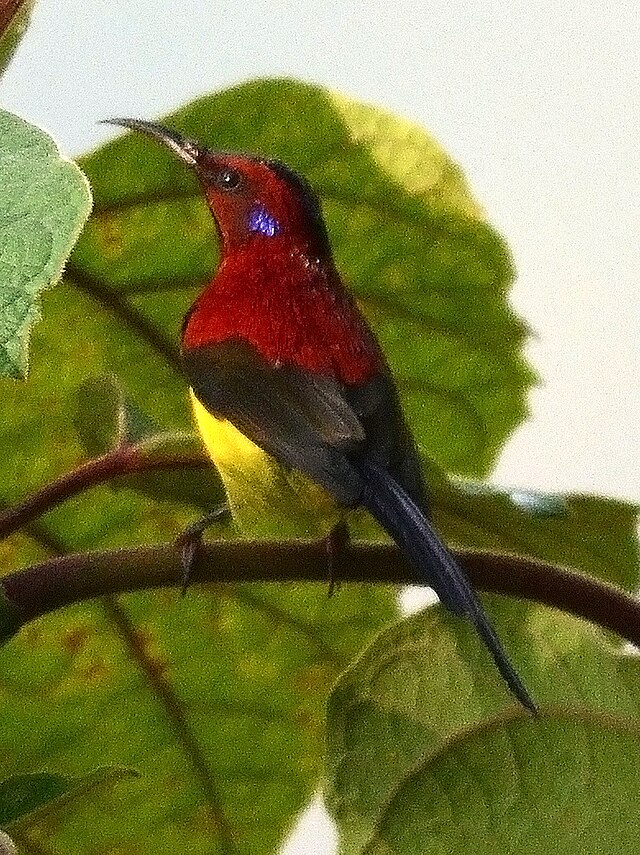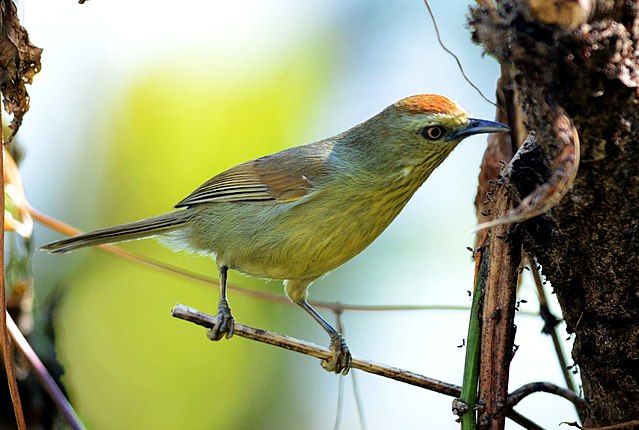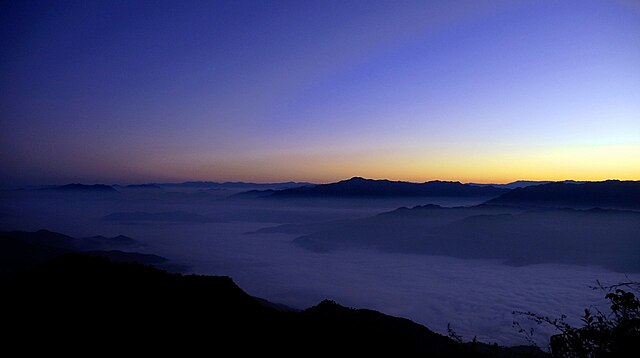Have you ever wondered what it feels like to walk among clouds while surrounded by pristine wilderness? Welcome to Phawngpui National Park, where nature’s grandeur meets tranquil solitude in the heart of Mizoram. This remarkable sanctuary isn’t just another protected area – it’s a living testament to India’s incredible biodiversity and a gateway to experiences that’ll leave you breathless, quite literally!
Nestled in the northeastern corner of India, Phawngpui National Park stands as Mizoram’s crown jewel, offering visitors a chance to witness nature in its most unspoiled form. But what makes this place so extraordinary that it deserves a spot on every nature lover’s bucket list?
What Makes Phawngpui National Park Special?
Think of Phawngpui as nature’s own skyscraper – except instead of concrete and steel, it’s built with emerald forests, misty peaks, and clouds that dance around mountain tops. This isn’t your typical national park where you drive through designated routes. Here, you’re stepping into a world where every breath of air feels fresher, and every view seems painted by a master artist.
The Blue Mountain of Mizoram
The locals call it “Phawngpui,” which translates to “Blue Mountain” in the Mizo language. And trust me, once you see those azure peaks shrouded in morning mist, you’ll understand why this name couldn’t be more perfect. Standing at 2,157 meters above sea level, it’s not just Mizoram’s highest peak – it’s a natural observatory where earth meets sky in the most spectacular fashion.
What’s fascinating is how this mountain changes personality throughout the day. In the early morning, it’s a shy giant wrapped in soft clouds. By midday, it stands proud and clear, showing off its verdant slopes. And as evening approaches? It transforms into a mystical silhouette against the sunset – pure magic!
A Sanctuary Above the Clouds
Established in 1992, Phawngpui National Park covers an area of 50 square kilometers. But don’t let the size fool you – this compact sanctuary packs more biodiversity per square meter than many parks ten times its size. It’s like nature decided to create a greatest hits collection and compressed it into one incredible location.
The park’s elevation creates multiple microclimates, each supporting different species of flora and fauna. You’ll find temperate forests at higher elevations, subtropical vegetation in the middle zones, and tropical species in the lower areas. It’s literally like traveling through different countries without leaving the park!
Location and Geography of Phawngpui National Park

Where Exactly is Phawngpui Located?
Picture Mizoram on India’s map – now zoom into the southeastern district of Lawngtlai, and you’ll find this natural treasure. The park sits right along the Myanmar border, making it one of India’s most remote and pristine protected areas. This border location isn’t just geographical trivia; it’s created a unique ecosystem where species from both countries intermingle freely.
The nearest town is Lawngtlai, about 300 kilometers from Aizawl, Mizoram’s capital. Yes, it’s remote – but that’s precisely what makes it special. In our hyper-connected world, finding a place where your phone loses signal and your soul finds peace is increasingly rare.
Climate and Weather Patterns
The weather here is like that friend who’s always full of surprises. Due to the high altitude and monsoon influence, temperatures can range from a chilly 4°C in winter to a pleasant 20°C in summer. The monsoons, lasting from May to September, bring heavy rainfall that keeps the forests lush and the waterfalls roaring.
What’s particularly interesting is how the elevation creates its own weather system. You might start your trek in sunshine and find yourself in fog within an hour. Pack layers – you’ll need them!
Rich Biodiversity: Flora and Fauna
Unique Plant Species
Step into Phawngpui, and you’re entering a botanical wonderland. The park hosts over 600 species of plants, many of which you won’t find anywhere else in India. The forests here are predominantly temperate, dominated by oak, cherry, and rhododendron trees that create a canopy so thick, it filters sunlight into magical golden beams.
During spring, the rhododendrons bloom in spectacular displays of red, pink, and white. Imagine walking through a natural cathedral where the ceiling is painted in vibrant flowers – that’s Phawngpui in bloom season.
Rare Orchids and Medicinal Plants
Orchid enthusiasts, prepare to be amazed! The park is home to numerous rare orchid species, some so unique they’re found nowhere else on earth. These delicate beauties thrive in the park’s humid, misty environment, creating natural gardens that would make any botanist weep with joy.
The local Mizo communities have used many of the park’s plants for traditional medicine for centuries. From herbs that treat common ailments to rare plants with almost mystical properties, the park is a living pharmacy that modern science is only beginning to understand.
Wildlife Treasures
While Phawngpui might not have the “Big Five” of African safaris, it has something equally precious – rare and endemic species that exist nowhere else. The park is home to several endangered mammals, including the slow loris, which looks like nature’s own teddy bear with huge eyes and incredibly slow movements.
You might also spot barking deer, wild boar, and if you’re incredibly lucky, the elusive clouded leopard. But remember, these animals are masters of camouflage in their natural habitat – patience and keen observation are your best tools for wildlife spotting.
Bird Species and Their Habitats
For bird watchers, Phawngpui is nothing short of paradise. Over 150 bird species call this park home, including several that are endemic to the region. The Mrs. Hume’s pheasant, Mizoram’s state bird, struts through these forests like royalty in their natural kingdom.
Early morning is prime time for bird watching. As the mist lifts and the forest awakens, you’ll hear a symphony of calls that gradually builds to a crescendo. Bring binoculars and prepare to add species to your life list that most birders only dream of seeing.
Best Time to Visit Phawngpui National Park
Seasonal Variations and What to Expect
Timing your visit to Phawngpui is like choosing the perfect ingredient for a recipe – get it right, and the experience is unforgettable. The park is accessible year-round, but each season offers a completely different experience.
October to March is considered the best time, with clear skies, mild temperatures, and excellent visibility. This is when you’ll get those postcard-perfect views and comfortable trekking conditions. The winter months (December-February) can be quite cold, especially at night, but the crisp air offers crystal-clear views of the surrounding landscape.
April to June brings warmer weather and the spectacular rhododendron blooms. However, this is also when clouds and mist are more frequent, which can limit visibility but creates an ethereal, mystical atmosphere that many visitors find enchanting.
How to Reach Phawngpui National Park
Transportation Options
Getting to Phawngpui is part of the adventure – and I mean that in the most positive way possible! The journey itself is a scenic route through some of India’s most beautiful and least explored landscapes.
The nearest airport is in Aizawl, about 300 kilometers away. From there, you’ll need to hire a taxi or take a bus to Lawngtlai. The road journey takes about 8-10 hours, but trust me, you’ll want to stop frequently for photos – the scenery is that spectacular.
Route Planning and Travel Tips
Plan for a two-day journey from Aizawl to the park. Most visitors spend a night in Lawngtlai before heading to the park the next morning. The final stretch to the park involves a trek of about 5-6 hours, so physical fitness is important.
Always inform local authorities about your visit plans. The park is in a border area, so certain permits and permissions are required. Don’t let this deter you – the process is straightforward if you plan ahead.
Accommodation and Facilities
Where to Stay Near the Park
Accommodation options near Phawngpui are basic but functional. In Lawngtlai, you’ll find government guest houses and a few private lodges. Don’t expect luxury – think of it as glamping without the glam, but with authentic experiences that five-star hotels can’t provide.
Inside the park, camping is the primary option. The park authorities provide basic camping facilities, but bringing your own quality camping gear is advisable. There’s something incredibly humbling about falling asleep to the sounds of the forest and waking up to mist swirling around your tent.
Activities and Attractions
Trekking and Hiking Trails
The main attraction here is trekking to the summit of Phawngpui peak. The trail isn’t technically difficult, but it requires good fitness levels and proper preparation. The trek takes you through different vegetation zones, each with its own character and inhabitants.
What makes this trek special isn’t just reaching the summit – it’s the journey itself. You’ll pass through dense forests, cross streams, and if you’re fortunate, witness cloud formations that seem to dance around the peaks just for your entertainment.
Photography Opportunities
Photographers, prepare to fill your memory cards! Phawngpui offers opportunities that range from macro photography of rare orchids to landscape shots that capture the vastness of the Indo-Myanmar borderlands. The interplay of mist, mountains, and forest creates lighting conditions that change by the hour.
Golden hour here isn’t just golden – it’s pure magic. The way light filters through the canopy and illuminates the mist creates natural spotlights that highlight different aspects of the forest like a carefully choreographed stage production.
Conservation Efforts and Challenges

Protecting the Ecosystem
Phawngpui faces the same challenges as many protected areas in developing regions – balancing conservation with local community needs. The park authorities work closely with local Mizo communities to ensure that conservation efforts don’t negatively impact traditional livelihoods.
Climate change poses perhaps the biggest long-term threat. As temperatures rise, the unique high-altitude ecosystems that make Phawngpui special are under pressure. Species that have adapted to specific temperature ranges may need to migrate or adapt – processes that take generations, not years.
Local Culture and Communities
Mizo Traditions and Park Connection
The Mizo people have lived in harmony with these forests for centuries. Their traditional knowledge about the ecosystem is invaluable for conservation efforts. Many local guides are from Mizo communities, and hiring them not only provides authentic insights but also supports local economies.
The Mizo concept of “Tlawmngaihna” – a selfless service to others – extends to their relationship with nature. This cultural value has helped preserve the forest long before formal conservation efforts began.
Planning Your Visit: Essential Tips
What to Pack and Prepare
Packing for Phawngpui requires thinking like a Boy Scout – be prepared for anything! Essential items include:
Quality trekking boots (non-negotiable), layered clothing for temperature variations, rain gear (trust me on this), a good headlamp with extra batteries, and a first aid kit. Don’t forget a power bank – while you might not get cellular coverage, you’ll want to keep your camera charged.
Most importantly, pack patience and an open mind. Phawngpui doesn’t reveal all its secrets immediately – it rewards those who take time to observe, listen, and truly connect with the environment.
Conclusion
Phawngpui National Park isn’t just a destination – it’s a journey into one of India’s last pristine wilderness areas. From its cloud-kissed peaks to its orchid-filled forests, every aspect of this park tells a story of natural wonder and conservation success.
Whether you’re a serious trekker seeking new challenges, a photographer hunting for that perfect shot, or simply someone who needs to reconnect with nature’s rhythms, Phawngpui offers experiences that will stay with you long after you’ve returned to civilization. It reminds us that in our fast-paced world, there are still places where time moves to nature’s clock, and that’s exactly as it should be.
The park stands as proof that when we respect and protect our natural heritage, it rewards us with beauty, peace, and experiences that no amount of technology can replicate. So pack your bags, lace up those trekking boots, and prepare for an adventure that will redefine your relationship with the natural world.
Frequently Asked Questions
1. Do I need special permits to visit Phawngpui National Park?
Yes, since the park is located in a border area near Myanmar, you’ll need to obtain Inner Line Permits (ILP) to enter Mizoram, and additional permissions from local authorities to visit the park. Contact the Mizoram Tourism Department or local district authorities in Lawngtlai for current requirements and procedures.
2. What is the difficulty level of trekking to Phawngpui peak?
The trek to Phawngpui peak is considered moderate to challenging. While it doesn’t require technical climbing skills, the 5-6 hour trek involves steep sections, potentially slippery trails during monsoon, and high altitude effects. Good physical fitness and basic trekking experience are recommended.
3. Are there any restrictions on photography in the park?
General nature photography is allowed and encouraged. However, since it’s a border area, avoid photographing any military installations or border infrastructure. Always respect wildlife by maintaining safe distances and not using flash photography that might disturb animals.
4. What kind of wildlife can I realistically expect to see?
While the park hosts diverse wildlife including clouded leopards and various deer species, sightings of large mammals are rare due to their elusive nature. You’re more likely to spot smaller mammals, numerous bird species, and incredible insect diversity. Early morning and evening hours offer the best wildlife viewing opportunities.
5. Is it safe to visit Phawngpui National Park for solo travelers?
While the park itself is generally safe, solo travel to remote areas always carries inherent risks. It’s highly recommended to hire local guides, inform authorities of your plans, carry emergency communication devices, and preferably travel in small groups. The challenging terrain and unpredictable weather make having local expertise invaluable for safety.

